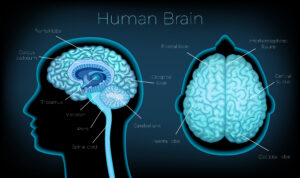Introduction
Temperature outside holds the key to unraveling the mysteries of time perception that have fascinated both scientists and philosophers for generations. Recently, a remarkable study conducted by a collaborative team from the University of Oxford, University College London in the UK, and the Champalimaud Foundation in Portugal has brought fresh insights to this captivating realm, particularly in rodents. Their exploration led them to a specific brain region, the striatum, which seems to play a pivotal role in molding time perception in these animals. By manipulating the neural activity within the striatum through temperature outside, the researchers observed intriguing changes in the rats’ time judgment abilities. This groundbreaking research delves deep into the inner workings of the brain, unraveling the enigmatic connection between temperature outside and time perception in mammals.

The Striatum: The Brain’s Timekeeper
The striatum is a deep section of the brain associated with motor and action planning, as well as decision-making. To investigate its role in time perception, the researchers utilized temperature changes to modulate the neural activity within this brain region. Previous studies have demonstrated that temperature manipulation can modify the temporal dynamics of behaviors in animals.

The Temperature Experiment
The team implanted devices in the brains of rats to control the temperature of their striatum. Under anesthesia, they observed that brain activity in the striatum accelerated as the temperature increased and slowed down as the temperature decreased. When the rats were conscious, similar changes in temperature and brain activity led to altered perceptions of time during laboratory experiments. A warmer and faster striatum resulted in the rats experiencing time passing more slowly, whereas a cooler and slower striatum made time appear to pass more quickly.

Interestingly, these temperature-induced changes did not affect the rats’ physical movement speed. Instead, they only influenced the timing of their decision to initiate movements. This suggests that different parts of the brain handle the perception of time passing and the speed of executing movements.
The Role of the Cerebellum
According to the researchers, the cerebellum may be the brain region responsible for managing the speed of movement execution. The cerebellum is associated with motor control and coordination, making it a likely candidate for this role. While previous MRI data has hinted at the involvement of the basal ganglia, of which the striatum is a part, in timing behavior in humans, more research is needed to understand how these mechanisms translate across species.

Implications and Future Research
Time, an integral part of our daily lives, is intricately linked to our movements and overall perception. Any impairment in our perception of time, influenced by factors like temperature outside, can significantly impact our actions and understanding of the world around us. This study provides valuable insights into the inner brain mechanisms governing time perception in mammals, shedding light on the intriguing connection between temperature outside and our temporal experience.
As we delve deeper into this research, it opens up a realm of new questions that beckon further exploration. One such inquiry revolves around the brain circuits responsible for creating the mesmerizing timekeeping ripples, influenced by temperature outside, and the potential computations hidden within them. Unraveling these mysteries holds the promise of enhancing our adaptability and intelligent responses to the external environment, where temperature outside plays a pivotal role in shaping our perception of time.
The study conducted by the University of Oxford, University College London, and the Champalimaud Foundation has made significant strides in unraveling the complexities of time perception in rodents. By manipulating the neural activity in the striatum through changes in temperature, they have demonstrated the brain’s role in shaping our perception of time. While there is much more to learn about these timekeeping ripples in the brain, this research provides a solid foundation for future investigations into the mysteries of time perception in both animals and humans.
FAQs
Q1: Can this research be applied to humans? Currently, the research is specific to rodents, and further studies are needed to determine if similar mechanisms apply to humans.
Q2: Could these findings help with conditions like Parkinson’s? Understanding how the brain influences time perception may have implications for neurological conditions like Parkinson’s, where time perception is impaired.
Q3: Are there other brain regions involved in time perception? While the study focused on the striatum, other brain regions, such as the cerebellum, are likely to play a role in timing behavior.
Q4: How might this research impact our understanding of consciousness? Time perception is closely linked to consciousness, and exploring these mechanisms could provide valuable insights into the nature of our awareness.
Q5: What are the potential real-world applications of this research? Insights into time perception could have applications in fields like psychology, neuroscience, and even robotics, where precise timing is crucial.
Pingback: Unlocking the Mysteries of the Cerebellum: The Brain's Hidden Gem - com373news.com